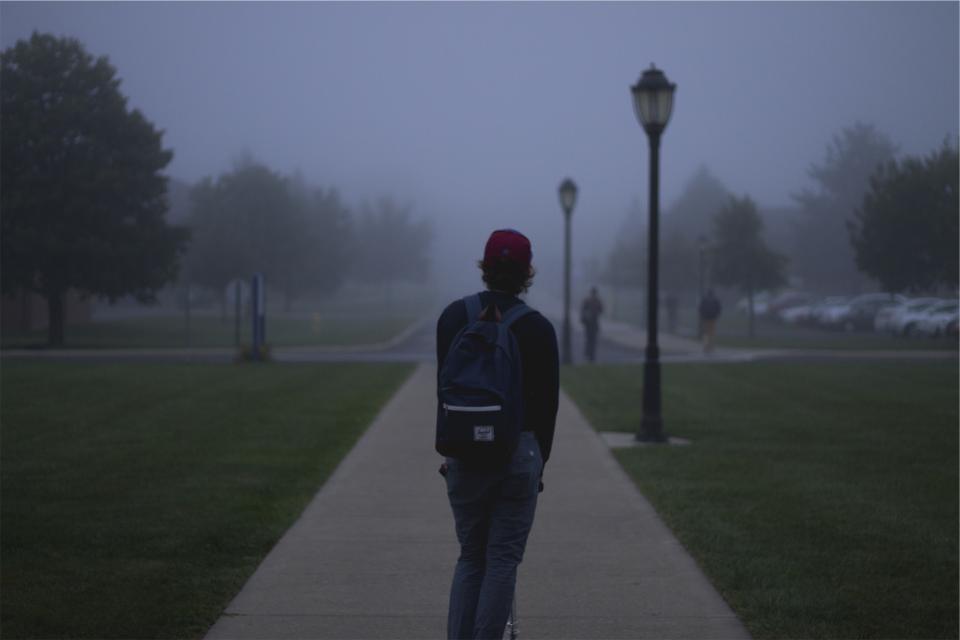Five Books Every College Student Should Read, If They Haven’t
Disclosure: The links in this post are affiliate links, meaning that when you purchase through the link, a small percentage comes back to us to help pay for the upkeep of our site. We thank you for supporting The Quirky Quad. Disclosure in accordance with the Federal Trade Commission’s 16 CFR, Part 255.
Regrettably, when a literature class concludes for the day, or for the semester, many students will refuse to pick up a classic work until they are asked, and are required to do so again. Even more regrettably, professors and instructors are bound, from a literature standpoint, by their course outlines, or on the secondary education level, by a predetermined body of individuals whom the teacher will likely never see, but at the same time, are telling them what they are required to avail to their students.
On the collegiate level professors, dependent upon the guidelines of the institutions they teach at, are afforded some latitude on the works of literature selected for their class, simply because of the absence of state mandated testing at this level of education. However there is an understanding between professor and student, one of expected maturity upon the latter, and an acceptance of dedication and duty upon the latter.
Without sounding too academic (which I already have), there is a world of knowledge outside the literature course you’ve just complete or are currently enrolled in. I would never suggest students should spend all their free time reading literature. I do, but I’m a geek so that doesn’t count, yet selecting works of literature to read outside of course parameters is something I will always encourage because, knowledge truly is power.
Often I’ve prepared reading lists for those to read outside of school, not just because they touch upon literary elements like irony, symbolism, and so forth, but I do so to encourage further education, and personal introspection. If by reading a piece of literature you are not gaining either, not only are you wasting your time, but you are just plain missing out. Hopefully, this short list will begin you on a path to remedy that.
Anthem: by Ayn Rand
Published in 1938 in England, Rand’s story is set in a future world at an unspecific time, when all individuality is removed from society. Life is determined by bodies of people who determine every social aspect of a person’s life including duties, careers, and even personal relationships. Rand’s main character known only as Equality 7-2521, discovers he is unlike others in his society, “cursed” with the ability to learn quickly, and make inquiries into “forbidden” things, and is banished from his home for it.
Rand’s novel may seem extreme, but if we look at countries like North Korea, where citizens have little control over their own lives, we find the accounts told in Anthem are not so far from reality. We find in Anthem that within societies and populations, all things cannot be legislated or scripted, and how we should not sacrifice individual ideas and liberties, solely for the preservation of existence. Novels of this sort, while fictional, should cause use to also to take a deeper look at the world around us in relation to it.
The Moon Is Down: by John Steinbeck
Steinbeck is most-noted for his novel The Grapes of Wrath, and although The Moon is Down counts as a work of fictional literature, it also has a deep-seeded historical significance. During WWII, while realizing the allies were losing the propaganda war with the Nazis in both South America and Eastern Europe, President Franklin Roosevelt, together with William “Wild Bill” Donovan sought a response.
Donovan was then the head of the OSS (Office of Strategic Services), which was the precursor of the CIA (Central Intelligence Agency), who “Wild Bill” also served as its first director. He commissioned John Steinbeck to write a counter-propaganda book to be distributed throughout Nazi occupied territory, sometimes by way of air drop.
Steinbeck’s novel was set in an unnamed town in Eastern Europe (likely Norway), which had been captured and occupied by an “enemy” force. The occupation force eventually becomes disillusioned by their mission realizing they would not be embraced by the townspeople as liberators, but seen as tyrants.
Though Steinbeck never specifically mentions the soldiers as German, the novel was immediately banned by the Nazi Party throughout Europe. Despite Nazi efforts at censorship, The Moon is Down was widely distributed throughout Europe, and even as far as China. Steinbeck’s novel was translated into several different languages, and coincided with underground newspapers, and books published by the French Resistance.
The Contender: by Robert Lipsyte
Lipsyte’s is the quintessential exploration into the urban experience. It chronicles the tale of an up and coming boxer, Alfred Brooks, who has to battle a difficult childhood and the temptations of the inner city environment. The Contender, set in Harlem, is a story about transcendence over adversity, reminding us that reaching the top, is not quite as important as how you get there.
Though The Contender is may be a fictional story, its meaning reaches deep into the heart of man’s ability to traverse his elements and origins. The character of Alfred Brooks embodies the will of endurance and determination against odds which seem insurmountable, and reminds us that weakness can only be defeated true courage. Inspiring novels like Lipsyte’s The Contender gives us all pause for deep introspection into our own attitudes and endeavors.
The Power and the Glory: by Graham Greene
Greene transports the reader to a poor, remote are in southern Mexico where a faction known as the Red Shirts have taken control. The Red Shirts have banned the observance of God, and has committed itself to the murder of all priests. The Power and the Glory is not so much a religious novel as it is one that defines the meaning of courage.
His character is known only as “the whiskey priest,” who at first is an exemplary example of an anti-hero as he is a clear mixture of self-indulgence and self-destructive behavior. However he is lured into a trap by being offered an opportunity to hear a dying man’s confession. Sensing the request is a trap, the whiskey priest overcomes his own personal demons to fulfill his priestly duties. Although Greene’s character ultimately become inspired by his religious faith, this novel indicates a deeply-held believe in the strength of being and personal sacrifice.
Child of God: by Cormac McCarthy
Cormac McCarthy is best known for two of his novels, No Country for Old Men and The Road, which were eventually made into movies. A third work of McCarthy’s was also made into a movie starring Brad Pitt in The Counselor, however this work was written in the form of a screenplay.
Child of God chronicles a strange character by the name of Lester Ballard, whom was falsely imprisoned for rape. Upon his release, Ballard roams around the Tennessee backwoods indulging in bizarre and grotesque sexual habits which in some ways are comical, but in the other ways equally disturbing.
The splendor of Cormac McCarthy’s novels is his ability to deliver wonderfully descriptive imagery, coupled with backwoods dialect, which might otherwise seem offensive. His characters always seem to spark of extraordinary realism, making anti-heroic figures into strangely sympathetic people you both root for and despise.
I could tell you over and over again to read books outside your course descriptions, but you won’t, or you will, and you should, and why not. This is by no means the be all and end all of great literature, but it’s a start. It’s easy to plop on the television instead. Hell, I love to watch The Walking Dead, but if I had to choose between exploding zombie heads and great literature, I choose literature. Well…that’s kind of a toss-up, but take my word knowledge is power, and you can be assured with reading, unlike many other things in life, you will never lose, except when you decide not to.















Leave a Reply
Want to join the discussion?Feel free to contribute!